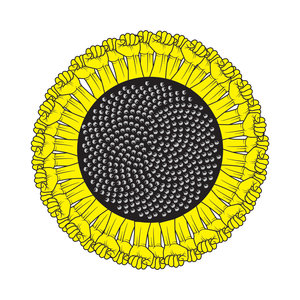Emerson, Thoreau and Me
I put myself in the title of this post with such luminaries of American literature for two reasons. First, it's a tribute to them, their philosophy and their writing. I make no claim to be their equal. Time will tell however if their influence on my life and Vanishing Feast will be successful for the second reason, which is to honor their work by citing their influence, and demonstrating how relevant it what I'm doing. I recently rediscovered Emerson and Thoreau. It's been a long time since high school. I was doing some research about the animal/weather phenology when I found a reference to Thoreau being the father of American Phenology. As I read that I felt a hunch, and if you read what I write about, I follow my hunches.
I went to my local library and checked out a copy of Walden. As I was reading what Thoreau wrote about, I felt like I was reading a series of blog posts. I felt a kinship with him, his cabin, his writing about his experiences, his critiques about what he was doing and how it relates to society. I felt that I was doing the same with Vanishing Feast, my garden and how this all fits in with our society today.
I see an interesting parallel that I'm going to explore this year. I see some significant aspects their philosophy which will challenge and inspire me to relate those aspects to you.
For example, all along I've been encouraging people to look at their lives as stories that get written every day. I've written about plot twists and following hunches. I provided examples of how the hunches I have are like plot twists, which are part of any storytelling process, and how these hunches have lead me to discoveries and experiences that would not have happened if I ignored them. When you look at your life as a story that you write everyday, following your hunches is where you find your content.
The Mark Twain tomatoes from 2011 for example. A random reading of a seed catalogue lead me to these tomatoes. I didn't know they existed. They are very rare and when I went to order the seeds, the seed company was out. I took this a plot twist. A hunch. A challenge to find other seeds or plants. I refused to dismiss it as "Oh I'll order next year." I followed the hunch. Found plants in Tennessee, drove from NJ to Tennessee to get the plants. Met some wonderful people. Took some beautiful photographs. Encountered some wicked tornado damage which was foreshadowing about some destructive forces coming into my own life latter in 2011. Got introduced to a another wonderful and rare heirloom tomato, the Jerusalem. The Mark Twain tomato ended up on the cover of my first book. It served as the introduction to the rest of the photos and stories in that book They made the connection for me between American literature and heirlooms. And since I had the plants, some very tasty tomatoes. I now have seeds too. Cue another plot twist.
Had I not follow my hunch, and dismissed it, I'd be out of the luck. The seed catalogue, the only commercial source for Mark Twain seeds don't have any seeds this year. None of their seed collectors grew them in 2011. Whether this is a case of crop rotation on the seed collectors or not remains to be seen. As you can see in the context of what I do, following my hunch was right. And the payoff, I have had an experience that is bigger than my life itself.
One of the crossover aspects that I find in Emerson and Thoreau is the emphasis on recognizing and following intuition, and how intuition is part of a process that larger than the human experience. This is one basic example of the connection I sense between what Emerson and Thoreau wrote about and myself. There are more examples, which I will touch on as I write and explore the connection. I felt this was significant since as a visual artist I knew my influences ranged from Dali, Di Chirico, Hopper, Hockney, Warhol, Chagal, and my all time favorite, Magritte. As I transitioned to writing, I felt a little lost not having the same influences. Now that I found them, there are no limits to where this will go.
